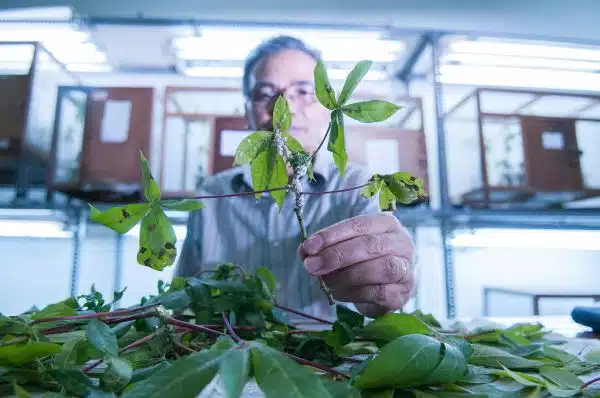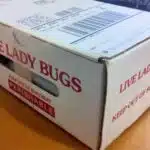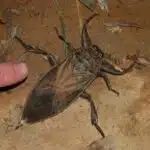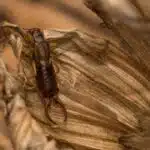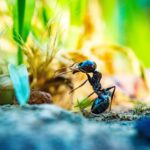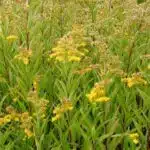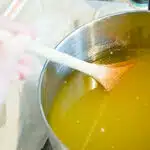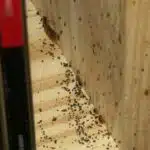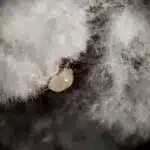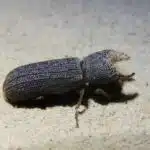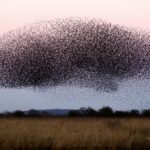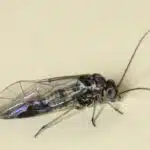Mealybugs are a common pest that can wreak havoc on indoor and outdoor plants. These small, white insects feed on the sap of plants and can cause stunted growth, yellowing leaves, and even death if left untreated. As a horticulturalist or entomologist, it is important to know how to get rid of mealybugs in order to maintain healthy plant growth and prevent further infestations.
In this article, we will discuss seven easy methods for getting rid of mealybugs. These methods range from natural remedies such as neem oil and rubbing alcohol to more traditional insecticides. By following these methods, gardeners and plant enthusiasts alike can effectively combat mealybug infestations and ensure their plants thrive.
Identifying Mealybugs
Mealybugs are one of the most common pests in gardens and indoor plants. These small insects belong to the family Pseudococcidae and feed on plant sap. Mealybugs can be identified by their white, waxy coating that covers their bodies, which often makes them look like bits of cotton.
Mealybug identification is essential for preventing their spread. You can find mealybugs in various parts of plants, including leaves, stems, and fruit. They tend to cluster together in large numbers, making them more visible to the naked eye. You can also identify mealybugs by the sticky residue they leave behind on plants.
It’s crucial to identify mealybugs early on so that you can take immediate action to prevent their spread. Checking your plants regularly for any signs of infestation is key to keeping your garden healthy and thriving. The next section will discuss understanding mealybug life cycles, which will help you better control these pests before they cause significant damage to your plants.
Understanding Mealybug Life Cycles
Mealybugs are insects of the family Pseudococcidae that have a distinct life cycle. Eggs of mealybugs are laid by adult females on host plants and are usually covered in a waxy material. When these eggs hatch, larvae emerge and begin feeding on plants, progressing to the pupal stage. After pupation, adult mealybugs emerge and begin to feed and reproduce. Feeding habits of mealybugs include sucking the sap of plants, which can often damage the host plant. Defense strategies of mealybugs include the production of a wax covering, which can protect them from predators and other environmental stresses.
Eggs
Mealybugs are one of the most common pests that can infest plants, causing significant damage to their growth and overall health. Understanding their life cycle is crucial in effectively dealing with these pesky insects. Mealybug egg stages are a critical part of their life cycle, and they play a vital role in the spread of the infestation.
Identifying mealybug eggs is essential in preventing an outbreak. These eggs are small, oval-shaped, and covered with a white waxy coating. They can be found on the leaves, stems, or even underneath the plant’s soil. Knowing where to look for these eggs is crucial as it allows gardeners to take steps to prevent them from hatching and spreading.
Once mealybug eggs have hatched, they develop into crawlers that move around the plant looking for a suitable feeding site. Therefore, identifying mealybug eggs early on is essential in preventing an infestation from spreading further. Gardeners should regularly inspect their plants for signs of mealybugs and take immediate action once they spot any symptoms. By doing so, they can save their plants from significant damage caused by these pesky insects.
Larvae
Understanding the life cycle stages of mealybugs is essential in effectively controlling their infestation. Mealybug larvae are a crucial part of this life cycle, as they are responsible for causing significant damage to plants by feeding on their sap. These larvae are tiny, soft-bodied insects that can be found crawling around the plant’s surface and hiding in crevices.
Identifying mealybug larvae is crucial in preventing an outbreak from spreading further. These insects have a cotton-like appearance and are covered with a white, waxy substance that protects them from predators and environmental conditions. Gardeners should regularly inspect their plants for signs of mealybug infestation and take immediate action upon spotting any symptoms.
Eliminating mealybug larvae can be done through natural or chemical methods. Natural methods involve using beneficial insects like ladybugs or lacewings to prey on these pests. On the other hand, chemical methods involve using insecticides that target mealybugs specifically. However, gardeners must ensure that they use these chemicals safely and follow the instructions carefully to avoid harming beneficial insects and polluting the environment. In conclusion, understanding the life cycle stages of mealybugs, including their larvae stage, is essential in effectively controlling their infestation through appropriate control measures such as eliminating them naturally or chemically.
Pupae
Mealybugs undergo four life cycle stages, including egg, nymph, pupae, and adult. The pupal stage is the third phase of this cycle and is characterized by the mealybug’s transformation into an adult. During this period, mealybug larvae develop a hard protective covering that shields them from environmental conditions and predators. This stage marks a critical point in the mealybug’s lifecycle since it determines how many adults will emerge and continue to cause damage to plants.
Identifying mealybug pupae requires keen observation since they are often concealed in plant crevices or under leaves. Pupae appear as small white sacs covered with a waxy substance that makes them resemble cotton balls. Gardeners should regularly inspect their plants for signs of mealybug infestation, including the presence of these white sacs on stems or leaves.
Effective control measures for mealybug pupae include natural and chemical methods. Natural methods involve using beneficial insects like parasitic wasps or green lacewings to prey on these pests. Chemical methods, on the other hand, involve using insecticides that target mealybugs specifically. However, gardeners must ensure that they follow instructions carefully to avoid harming beneficial insects and polluting the environment. Successful elimination of mealybug pupae is essential in preventing further damage to crops and ensuring healthy plant growth.
Signs And Symptoms Of Mealybug Infestations
Understanding the life cycle of mealybugs is crucial in developing effective control strategies. Mealybugs have an incomplete metamorphosis, meaning they go through three stages: egg, nymph, and adult. The female mealybug can lay up to 600 eggs over a period of several weeks. The eggs hatch into tiny crawlers that move around until they find a suitable feeding site on a plant.
Mealybug damage can be devastating for plants as they feed by piercing and sucking the sap from leaves, stems, and fruit. This can result in stunted growth, yellowing of leaves, wilting or even death of the plant. The secretion of honeydew by mealybugs also promotes the growth of sooty mold, which further damages plants.
Several mealybug control products are available for home gardeners and commercial growers alike. These include insecticidal soaps, neem oil, pyrethrin-based sprays and systemic insecticides. It is important to note that some formulations may harm beneficial insects such as bees or ladybugs. Therefore it is recommended to use these products with caution and follow the instructions carefully to avoid any unintended consequences.
Prevention Techniques to Avoid Mealybug Infestations:
- Regularly inspecting plants for signs of mealybugs
- Quarantining new plants before introducing them into your garden or greenhouse
- Encouraging natural enemies such as parasitic wasps and lady beetles
- Maintaining healthy plants through proper watering and fertilization practices
By understanding the life cycle of mealybugs and implementing appropriate control measures, gardeners can effectively manage infestations without causing harm to their plants or beneficial insects. However, prevention techniques remain key in avoiding infestations altogether.
Prevention Techniques To Avoid Mealybug Infestations
Preventive measures are key to avoid mealybug infestations. The first step is to quarantine new plants before introducing them into the garden or greenhouse. This will prevent any potential mealybugs from spreading to other plants. It’s also important to regularly inspect plants for any signs of infestation, such as sticky residue or white cotton-like webs on leaves and stems.
Another important preventive technique is to choose Mealybug resistant plants when planning your garden. Some examples of these types of plants include succulents, ferns, and begonias. These plants have natural defenses against pests and can help reduce the risk of mealybug infestations. Additionally, maintaining healthy soil conditions, proper watering techniques, and appropriate levels of light can also help prevent mealybugs from taking hold in your garden.
Incorporating beneficial insects into your garden can also be an effective method for preventing mealybug infestations. Ladybugs, lacewings, and parasitic wasps are natural predators that feed on mealybugs and other pests. By introducing these insects into your garden, they can help keep populations in check and prevent future infestations. In the next section, we will discuss manual removal methods for dealing with existing mealybug infestations.
Manual Removal Of Mealybugs
Manual removal of mealybugs is an effective method that involves physically removing the pests from plants. This method can be used for small infestations or as a supplement to other control methods. The first step is to inspect the plants carefully and identify the areas where the mealybugs are present. Mealybugs tend to hide in crevices, leaf axils, and underneath leaves.
Once you have identified the areas with mealybugs, use a cotton swab dipped in rubbing alcohol to remove them manually. Alternatively, use a soft-bristled brush or toothbrush to scrub off the pests gently. Be sure to dispose of any mealybugs that you remove from your plants promptly. Failure to do so could lead to re-infestation.
Preventing re-infestation is essential after manual removal of mealybugs. You can achieve this by ensuring that your plants are healthy and free from stressors such as over-fertilization and overwatering. Additionally, quarantine any new plants before introducing them into your garden or home. Safe disposal methods for mealybugs include placing them in a sealed plastic bag and disposing of them in the trash bin or flushing them down the toilet if permitted by local regulations.
Using Natural Remedies: Neem Oil
Neem oil is a popular natural remedy for combating mealybugs. This oil is extracted from the neem tree, which is native to India and widely used in Ayurvedic medicine. Neem oil has numerous benefits for plant health, including its ability to repel insects, fungi, and bacteria. It contains several compounds that act as insecticides and can interfere with the life cycle of mealybugs.
When using neem oil to control mealybugs, it is essential to follow proper application guidelines. One of the main concerns with neem oil use is its potential toxicity to humans and pets. Neem oil should be diluted before use and applied only during non-windy conditions. It is also important to avoid spraying neem oil directly on flowers or other parts of the plant that are meant for consumption.
Overall, using neem oil as a natural remedy for mealybugs can be an effective way to protect your plants without resorting to harsh chemicals. However, it is important to use caution when handling this substance due to its potential toxicity concerns. By following proper application techniques, you can ensure that your plants remain healthy while also protecting yourself and others from unnecessary harm.
As we have discussed the benefits of using neem oil as a natural remedy for controlling mealybugs, let us now move on to another effective method: rubbing alcohol.
Using Natural Remedies: Rubbing Alcohol
After discussing the effectiveness of using neem oil as a natural remedy for mealybugs, let us now explore another DIY alternative: rubbing alcohol. This method is commonly used by horticulturalists and entomologists due to its effectiveness in killing mealybugs on contact. Rubbing alcohol is known to dissolve the waxy coating that protects mealybugs, making them more vulnerable to dehydration and ultimately leading to their demise.
When using rubbing alcohol to get rid of mealybugs, it is important to dilute it with water first. A mixture of 70% isopropyl alcohol and 30% water is recommended as higher concentrations may damage the plant. Using a spray bottle, apply the solution directly onto the affected areas where mealybugs are present. Be sure to target both the insects and their eggs for maximum effectiveness.
In comparison to neem oil, rubbing alcohol can be more effective in eliminating mealybug infestations but may require repeated applications for complete eradication. Additionally, this method may not be suitable for delicate or sensitive plants as it can cause leaf burn or other forms of damage. It is important to assess your plant’s tolerance before proceeding with this method.
Using Natural Remedies: Soap and Water
To continue our exploration of natural remedies for getting rid of mealybugs, let us now discuss soap and water. This age-old remedy has been used by gardeners for generations due to its simplicity and effectiveness in controlling pests such as mealybugs. The soap acts as a surfactant that breaks down the waxy coating on the insect’s body, causing them to dehydrate and die.
When using soap and water, mix 1-2 tablespoons of liquid dish soap into a gallon of lukewarm water until well combined. Transfer the solution into a spray bottle and generously apply onto affected areas where mealybugs are present. Be sure to coat both sides of leaves thoroughly, as well as the stems and soil surface. Repeat every few days until all signs of mealybugs are gone.
In comparison to neem oil and rubbing alcohol, soap and water may not be as effective in eliminating severe mealybug infestations but can be a good preventive measure or early treatment option. Additionally, this method is gentle enough to use on delicate plants without causing harm. It is important to note that using too much soap can damage the plant, so it is best to err on the side of caution and dilute the solution properly.
Using Natural Remedies: Soap And Water
- Soap and water can be used as a natural remedy to remove mealybugs infestations.
- The mixture of soap and water should be prepared by combining a few drops of mild dishwashing liquid with a quart of water.
- The solution should be applied directly to the affected areas with a clean cloth or soft brush.
- After application, the soap and water solution should be allowed to sit on the affected areas for several minutes before rinsing off with cool water.
Mixing Soap And Water
Mixing soap and water is one of the most popular DIY insecticides used to get rid of mealybugs. The effectiveness of soap and water as an insecticide has been observed by many horticulturalists and entomologists. This method works by suffocating the insects, disrupting their cell membranes, and causing dehydration.
To make this DIY insecticide, mix a tablespoon of mild liquid soap with a quart of water. It is important to use mild soap because harsh chemicals can damage your plants. Spray the solution on your infested plants, making sure to cover all sides of the leaves, stems, and branches. Leave the solution on for a few hours or overnight before rinsing it off with plain water.
Using soap and water as an insecticide is a safe and non-toxic way to get rid of mealybugs. However, it may not be effective in completely eliminating severe infestations. It is best used as a preventive measure or in combination with other natural remedies such as neem oil or alcohol sprays. Additionally, it is important to note that this method may also harm beneficial insects such as ladybugs or lacewings if applied indiscriminately.
Applying Soap And Water
Mealybugs are a common pest problem that can cause significant damage to plants. One effective natural remedy for controlling mealybug infestations is using soap and water. Applying soap and water can help suffocate the insects, disrupt their cell membranes, and cause dehydration. This method is safe and non-toxic, making it an ideal option for mealybug prevention.
When applying soap and water to control mealybugs, it is essential to use mild liquid soap to avoid damaging your plants. The application technique involves mixing a tablespoon of mild liquid soap with a quart of water and spraying the mixture on the infested plants. Gardeners should ensure that they cover all sides of the leaves, stems, and branches with the solution. After allowing the solution to sit for several hours or overnight, rinse it off with plain water.
While using soap and water as a natural remedy against mealybugs can be effective for mild infestations, severe cases may require additional measures such as neem oil or alcohol sprays. It is also crucial to note that indiscriminate application of this method can harm beneficial insects like ladybugs or lacewings. Therefore, gardeners should always exercise caution when using any pest control method to prevent unintended consequences on their plant’s ecosystem.
Using Insecticidal Soaps
Insecticidal soaps are a type of chemical pesticide that is effective in controlling mealybugs. These soaps contain fatty acids that penetrate the soft bodies of mealybugs, causing them to dehydrate and die. One of the advantages of using insecticidal soaps is that they are less toxic to humans and animals compared to other chemical insecticides.
In addition, insecticidal soaps are also environmentally friendly because they break down quickly in soil and water. This means that they do not leave any harmful residues that can affect the ecosystem. However, it is important to note that while insecticidal soaps are effective in controlling mealybugs, they may also harm beneficial insects such as ladybugs, lacewings, and parasitic wasps.
When comparing insecticidal soaps with other chemical insecticides, it is important to consider their effectiveness and potential risks. Insecticidal soaps may require multiple applications to completely eliminate mealybug infestations. On the other hand, some chemical insecticides can be more potent and may only require one application but come with greater risks for human health and environmental damage.
Transitioning into using systemic insecticides, it is important to note that while these types of pesticides can be very effective in controlling mealybugs, they should be used with caution due to their potential toxicity levels.
Using Systemic Insecticides
Insecticidal soaps are a great way to control mealybugs, but sometimes they may not be effective enough. In such cases, using systemic insecticides can be a good solution. These insecticides are absorbed by the plant and transported throughout its system, effectively controlling the pests feeding on it.
Advantages of using systemic insecticides include their ability to provide long-lasting protection against mealybugs. They also do not require frequent application as they stay active in the plant tissue for an extended period. However, there are some disadvantages associated with using these insecticides. Systemic insecticides may harm beneficial insects and pollinators visiting the plants. Moreover, their use may lead to the development of resistance among the mealybug population.
When selecting a systemic insecticide for mealybug control, it is essential to choose one that targets specific pests and does not harm beneficial insects or pollinators. It is also crucial to follow label instructions carefully when applying them to ensure safe use.
Incorporating systemic insecticides into your pest management plan can be an effective way of controlling mealybugs. However, it is important to weigh their advantages and disadvantages before making a decision. In the next section, we will explore another method for controlling mealybugs – using contact insecticides.
Using Contact Insecticides
Mealybugs are small, soft bodied insects that can colonize on plants and feed on their sap. Identification of mealybugs can be done by examining the white cottony clusters or wax filaments present on the plant. When selecting a contact insecticide, it is important to consider the species of mealybug and the type of plant that is infested. When applying the insecticide, it is important to read the label and note any safety considerations. Additionally, it is important to take into account the environmental conditions, such as temperature and wind, when applying the insecticide. Finally, it is important to ensure that the insecticide is applied evenly and thoroughly to all areas of the plant infested by the mealybugs.
Identifying Mealybugs
Mealybugs are one of the most common plant pests that can cause significant damage to a wide range of host plants. Identifying these tiny insects is crucial to controlling their spread and preventing further damage. Mealybugs are typically white or greyish in color, and they have a powdery or waxy appearance. They feed on the sap of the plant, causing yellowing, wilting or stunted growth.
Mealybug damage can often be confused with other common plant pests such as scale insects and aphids. However, mealybugs are unique in that they leave behind a distinctive fluffy white substance that resembles cotton balls. This is a protective wax that helps them to survive and reproduce on the host plant. It’s important to note that mealybugs are not easily visible by the naked eye, so it’s important to inspect your plants regularly for signs of infestation.
Common host plants for mealybugs include ornamental plants like hibiscus, fuchsia, and gardenias, as well as edible crops like citrus trees and grapes. If left unchecked, mealybug infestations can quickly spread throughout your garden and cause significant damage. Therefore, it’s essential to identify these pests early on and take action to control their population before they become too difficult to manage.
Choosing Contact Insecticide
When it comes to controlling mealybugs, using contact insecticides can be an effective solution. Contact insecticides work by directly coming into contact with the pests and killing them on the spot. This method is particularly useful for a localized infestation, as it offers a targeted approach that minimizes exposure to non-target organisms. However, as with any pest control method, there are both advantages and disadvantages to using contact insecticides for mealybug control.
One of the main advantages of using contact insecticides for mealybug control is their effectiveness at killing pests on contact. This means that they can provide fast relief from an infestation and help prevent further damage to your plants. Additionally, many contact insecticides are readily available and easy to use, making them a convenient option for home gardeners.
On the other hand, there are some disadvantages to using contact insecticides for mealybug control. One potential concern is their impact on non-target organisms such as beneficial insects and pollinators. Additionally, some contact insecticides may have harmful effects on human health if not used properly. Therefore, it’s important to follow safety considerations when handling these products and carefully read instructions before use. Lastly, there’s also the environmental impact of these chemicals when used extensively which should be taken seriously by all gardeners who seek to maintain healthy ecosystems in their gardens.
Applying Insecticide
When it comes to mealybug control, using contact insecticides is a popular and effective solution. However, the application of these insecticides can play a critical role in their overall effectiveness. Applying insecticide properly is essential to maximize the benefits while minimizing potential harm.
One option that gardeners may consider is using organic insecticides. These products are derived from natural sources and generally have fewer harmful effects on the environment and non-target organisms than synthetic insecticides. Furthermore, some organic insecticides such as neem oil have been shown to be effective against mealybugs while also providing other benefits such as antifungal properties.
Alternatively, if synthetic insecticides are used, it’s important to follow safety precautions when handling and applying them. Synthetic insecticides often contain chemicals that can cause harm to humans, animals, and beneficial insects if not used carefully. Gardeners should always read instructions before use and consider wearing protective clothing during application to minimize exposure risks. By following proper application techniques and considering alternative options such as organic insecticides, gardeners can effectively control mealybugs without causing unnecessary harm.
Using Horticultural Oils
Applying horticultural oils is another effective method to get rid of mealybugs. These oils smother the insects by blocking their breathing pores, leading to their death. Horticultural oils are also known as dormant oils because they can be used on plants during the dormant season without damaging them.
Horticultural oils can be applied in two ways: as a spray or as a soil drench. For spray application, mix one to two tablespoons of horticultural oil with a gallon of water and then spray the mixture directly onto the affected area. Soil drenching involves adding horticultural oil to water and pouring it over the soil where the affected plant is growing. This method works best for plants that have been infested with root mealybugs.
The effectiveness of horticultural oils varies depending on factors such as temperature, humidity, and the stage of mealybug development. It’s important to note that applying too much oil or using it when temperatures are too high can damage your plants. Before applying horticultural oils, read and follow the manufacturer’s instructions carefully to avoid any unwanted consequences.
Using Predatory Insects
As appealing as the idea of eliminating mealybugs with chemical pesticides might be, a more sustainable and natural approach is by using predatory insects. Yes, you heard that right. Instead of killing the pests directly, we can introduce their natural enemies into our gardens and let them do the job for us. Not only is this method environmentally friendly, but it also has many benefits.
The benefits of using predatory insects are plenty. First and foremost, they are highly effective in controlling mealybug populations without causing harm to other beneficial insects or plants in your garden. Moreover, they are cost-effective in the long run since you won’t have to purchase chemical pesticides repeatedly, which can be harmful to your wallet as well as the environment.
Now let’s talk about the types of predatory insects that can help control mealybugs. Ladybugs are one of the most popular choices for this purpose since they feed on all stages of mealybugs’ life cycle. Another option is lacewings that prey on both mealybugs and their eggs. Lastly, parasitic wasps inject their eggs inside mealybug nymphs or adults, which hatch and eventually kill their hosts.
Using predatory insects to control mealybugs might seem like a daunting task at first, but it’s not rocket science. You need to release them at the right time and in adequate quantities to ensure successful control. Monitoring and follow-up are crucial components of this method since you need to keep track of how well these predators are doing their job and whether additional releases are necessary.
Monitoring And Follow-Up
Mealybugs are sap-feeding insects that can be identified by the waxy white coating that often covers their body. Regular inspections of plants, both indoors and outdoors, are necessary to detect mealybug infestations early. Treatment of mealybug infestations depends on the extent of the infestation and can include the use of physical removal, chemical insecticides, and biological control methods. Physical removal methods are generally the most effective way to eliminate mealybugs from plants. Chemical insecticides should be used with caution, as they can also affect beneficial insects and pollinators. Biological control methods, such as the introduction of natural predators of mealybugs, can be effective in controlling mealybug populations in the long-term.
Identifying Mealybugs
Mealybugs are common pests that affect a wide range of plants and are difficult to control if left unchecked. Identifying mealybugs is the first step in monitoring and follow-up for effective pest management. These insects are small, oval-shaped, and covered with a white waxy substance, which makes them look like tiny cotton balls. Mealybug identification can be done by looking for these characteristic features.
Mealybugs have a preference for certain plant species, known as common hosts. These include citrus trees, grapevines, roses, and hibiscus plants. They also infest indoor plants such as cacti and succulents. When inspecting your plants for mealybug identification, check the undersides of leaves, stems near leaf axils, flower buds or calyxes (the green parts at the base of flowers), and any other hidden crevices where they may hide.
It is important to identify mealybugs early on in order to prevent further damage to your plants. Once you have identified these pests, it is crucial to take appropriate measures such as quarantine infected plants, manually removing them using cotton swabs soaked in rubbing alcohol or insecticidal soap solution, introducing natural predators like ladybugs or lacewings into your garden ecosystem, or using chemical treatments like neem oil or pyrethrin-based insecticides. Mealybug identification is just the first step towards effective pest management; it requires regular monitoring and follow-up to ensure that your plants remain healthy and resilient against future infestations.
Regular Inspections
Monitoring and follow-up are critical aspects of pest management in horticulture. Regular inspections are an essential component of this process, as they help identify any potential pests or diseases before they become a significant problem. Timing is also crucial when it comes to regular inspections, as the earlier you can detect a problem, the easier it is to manage and prevent further damage.
The frequency of inspections will depend on several factors, including the type of plant, location, and time of year. For example, plants that are more susceptible to mealybugs or other pests may require more frequent inspections. Additionally, during periods of high humidity or rainfall, plants may be more prone to fungal diseases and require increased monitoring.
Regular inspections should be conducted methodically and thoroughly to ensure all parts of the plant are examined. This includes not only the leaves and stems but also the soil around the roots. By checking for any signs of pests or disease regularly, you can quickly identify any issues that arise and take action promptly.
In conclusion, regular inspections are an essential part of pest management in horticulture. The timing and frequency of these inspections will depend on various factors but should be carried out thoroughly to ensure all potential issues are identified early on. By incorporating regular inspections into your pest management plan, you can maintain healthy plants and prevent significant damage from occurring.
Treating Infestations
After conducting regular inspections, it is common to find infestations in some or all parts of the plant. Treating these infestations is crucial to prevent further damage and prevent reinfestation. The first step in treating an infestation is to identify the type of pest or disease present. This is important since different pests and diseases require different treatment methods.
Once the type of pest or disease has been identified, treatment can be initiated. Various methods can be used to treat infestations, including physical removal, biological control, and chemical control. Physical removal involves manually removing pests from plants using tools such as tweezers or vacuum cleaners. Biological control involves introducing natural predators of the pest into the environment to reduce their population. Chemical control involves using pesticides that are specifically formulated to target certain pests while minimizing harm to other organisms.
It is also essential to consider the long-term effects of any treatment method used. Pesticides may have harmful effects on non-target organisms and may result in resistance over time. Biological control methods may not always work effectively, especially if they are not introduced early enough in the infestation cycle. Preventing reinfestation after treating an infestation can be achieved by improving cultural practices such as proper watering and fertilization, maintaining good hygiene by removing dead plant material promptly, and monitoring for signs of future infestations regularly.
Professional Pest Control Services
As previously discussed, monitoring and follow-up are crucial in controlling mealybug infestations. However, if the problem persists despite your best efforts, it may be time to consider professional pest control services. But before you do so, it’s worth weighing the benefits of DIY pest control against the costs of hiring a professional.
One of the main benefits of DIY pest control is cost savings. By taking matters into your own hands, you can save money on labor costs and materials. Additionally, you have more control over the types of products used and can opt for eco-friendly or natural solutions. However, it’s important to note that DIY methods may not be as effective as professional treatments in severe cases.
On the other hand, professional pest control services offer several advantages. For one, specialists have access to specialized equipment and techniques that are unavailable to most homeowners. Moreover, they can quickly diagnose the root cause of a mealybug infestation and provide targeted solutions that prevent future outbreaks. While professional services come at a higher cost than DIY methods, they may ultimately save you money by preventing further damage to your plants or property.
It’s clear that both DIY pest control and professional services have their pros and cons when it comes to mealybug infestations. Ultimately, the decision depends on factors such as severity of the problem, personal preferences, and budget constraints. Regardless of which option you choose, remember that prompt action is key in keeping these pesky pests at bay!
Conclusion
Mealybugs can be a frustrating pest to deal with, but with the right knowledge and techniques, they can be effectively managed. It is important to first identify the mealybugs and understand their life cycle in order to properly address the infestation. Prevention methods such as regular inspections and proper care of plants can also help avoid mealybug outbreaks.
Manual removal of mealybugs using a cotton swab or spray bottle filled with water and dish soap can be effective for smaller infestations. Horticultural oils such as neem oil or insecticidal soap can also be used, but caution should be taken when applying them to avoid damage to plants. Introducing predatory insects such as ladybugs or lacewings can also help control mealybug populations.
Regular monitoring and follow-up treatments are necessary for long-term management of mealybugs. Professional pest control services may also be necessary for severe infestations. As the adage goes, prevention is better than cure. By implementing preventive measures and regularly monitoring plants, gardeners and horticulturists can avoid the frustration of dealing with mealybug infestations altogether.
In conclusion, understanding the life cycle of mealybugs and implementing preventive measures are key in managing these pests. Manual removal, horticultural oils, and introducing predatory insects are effective treatment options for smaller infestations. Regular monitoring and follow-up treatments are necessary for long-term control while professional pest control services may be required for severe outbreaks. Remember: an ounce of prevention is worth a pound of cure.
Image Credits
- “Pink mealybug infestation, Indonesia” by CIAT International Center for Tropical Agriculture (featured)

